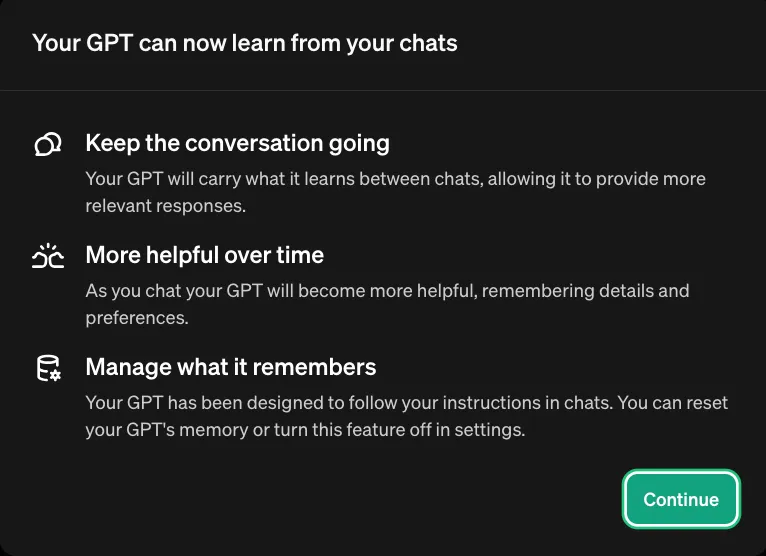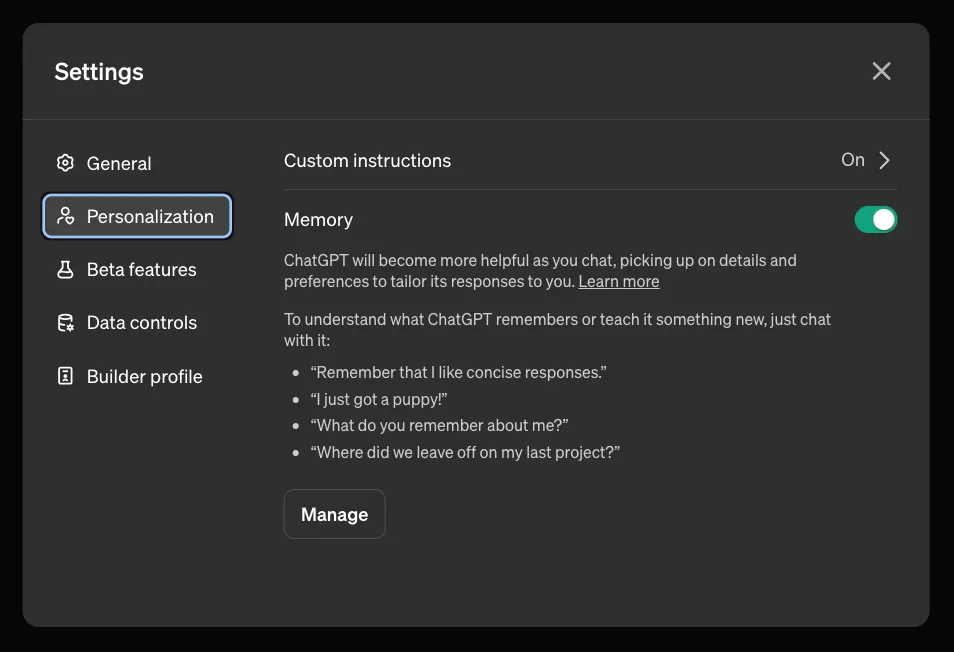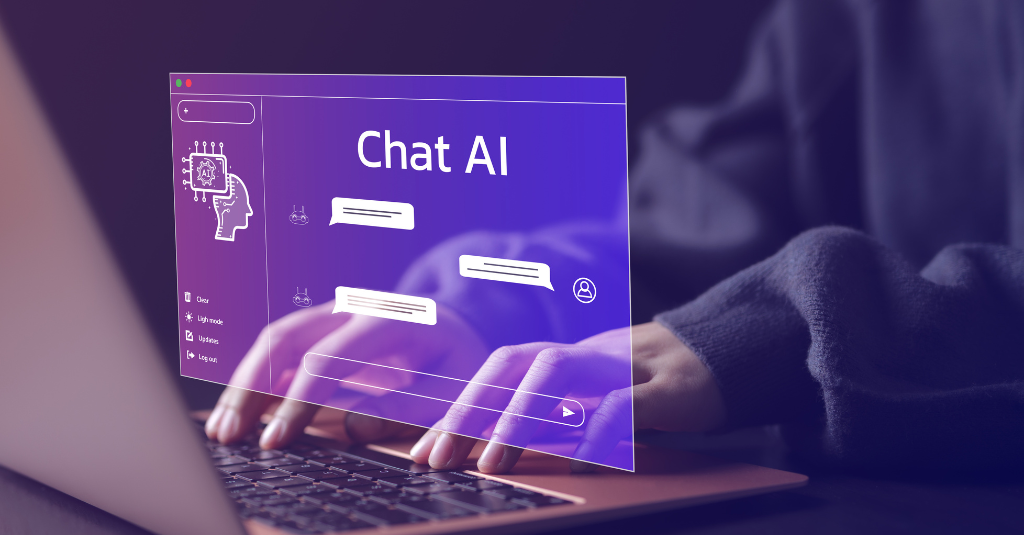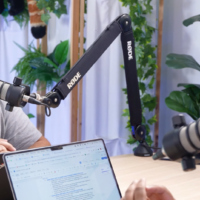Imagine having a chatbot that remembers your preferences, details, and even your favourite movies. OpenAI’s new Memory feature for ChatGPT Plus subscribers aims to do just that. This feature allows ChatGPT to store and recall personal details you share, making conversations more personalised and fluid.
With Memory enabled, ChatGPT can remember your interests and preferences across different interactions. For example, it can remember what tone of voice you like to receive output in, what style you want to use when writing blog articles, or what format you prefer answers given in.
You might be thinking, “So what? How will this change my workflow?”
Well first off, ChatGPT’s memories apply across all of your chats. Secondly, you can now manage and influence ChatGPT’s memories. That means you can personalise your entire experience with ChatGPT to fit your specific needs.
This level of personalisation is something we haven’t yet seen with AI.
In this article, you’ll learn how to activate, use, and manage this exciting new feature, ensuring you get the most out of your interactions with ChatGPT.
Activation and Setup of ChatGPT Memory Feature
Getting started with ChatGPT’s Memory feature is a breeze. Once the feature is available on your paid account, you’ll receive a notification explaining how it works. You can see that below:

By default, Memory is enabled. You can opt out anytime by heading to Settings, selecting Personalisation, and toggling off the Memory option.

As you converse, the bot picks up personal insights such as your preferences, interests, and more niche details. Whenever new information is added, you’ll see a Memory updated notification. You can click on that notification to review what’s been stored.
To manually add information, you can use commands such as “Please remember that…”.
This direct approach ensures that specific details you want ChatGPT to recall are accurately noted.
What’s really great about this is that you can literally influence ChatGPT’s memory and understanding simply by telling it what you want it to remember. For example, if you’re writing blog articles consistently, you might tell ChatGPT to remember that you want it to always write in a specific tone of voice.
This means that over time, as you continually use ChatGPT, it should become better at giving you the output you want.
Managing and Deleting ChatGPT Memories
Maintaining control over what ChatGPT remembers about you is simple.
To view everything stored, follow these steps:
1.Click on your username and navigate to Settings.

2. Select Personalization, and then tap on the Manage button. Here, you’ll see a list of memories. You can delete individual memories by clicking the trash can icon next to each one. If you want a fresh start, choose the “Clear ChatGPT’s Memory” option to wipe all stored details. You can also adjust specific memories through chat commands, like “forget this chat” or “change my city to London.”


Tips for Effective Use of ChatGPT Memory Feature
To make the most of ChatGPT’s Memory feature, consider these tips:
- Be Specific: Use clear, concise language when instructing ChatGPT to remember or forget details
- Manage Privacy: Regularly check and manage what ChatGPT remembers to maintain your privacy
- Utilise Temporary Chats: If you want to have a conversation without storing information, use the temporary chat tool
- Share Thoughtfully: Avoid sharing sensitive information like passwords or personal identification numbers

Limitations and Future Improvements of ChatGPT Memory Feature
Currently, ChatGPT’s Memory feature has a few limitations. It cannot remember sensitive information like Social Security numbers or passwords. While this in some ways can be a limitation, it may be best considering the privacy concerns surrounding this.
Additionally, deleting a conversation does not automatically delete the associated memories, so you need to manage both separately.
Future enhancements might include more advanced personalisation and broader availability across different subscription plans. OpenAI continues to refine what ChatGPT can and cannot remember, aiming to improve user experience while addressing privacy concerns.
Ultimately, as users utilise this new feature, developers will be able to see how ChatGPT’s memory feature can be further improved. This will lead to greater personalisation in the future, which is where AI seems to be going, especially when it comes to generative AI tools.
If You’re Business Isn’t On Top Of This, You’re Missing Out
ChatGPT has been a gamechanger when it comes to content creation, let alone data analysis, development and so much more. With this new memory feature, it’s a move towards greater personalisation.
The updates won’t stop here. AI is going to continue to grow, and its use cases in business will only become broader and more efficient in time.
If you don’t get on top of this now, it might be hard for your business to adapt and utilise these tools later on.
Want to get started? Check out our guide below.
Read: How to Use AI to Generate 5x More Content in Your Business











